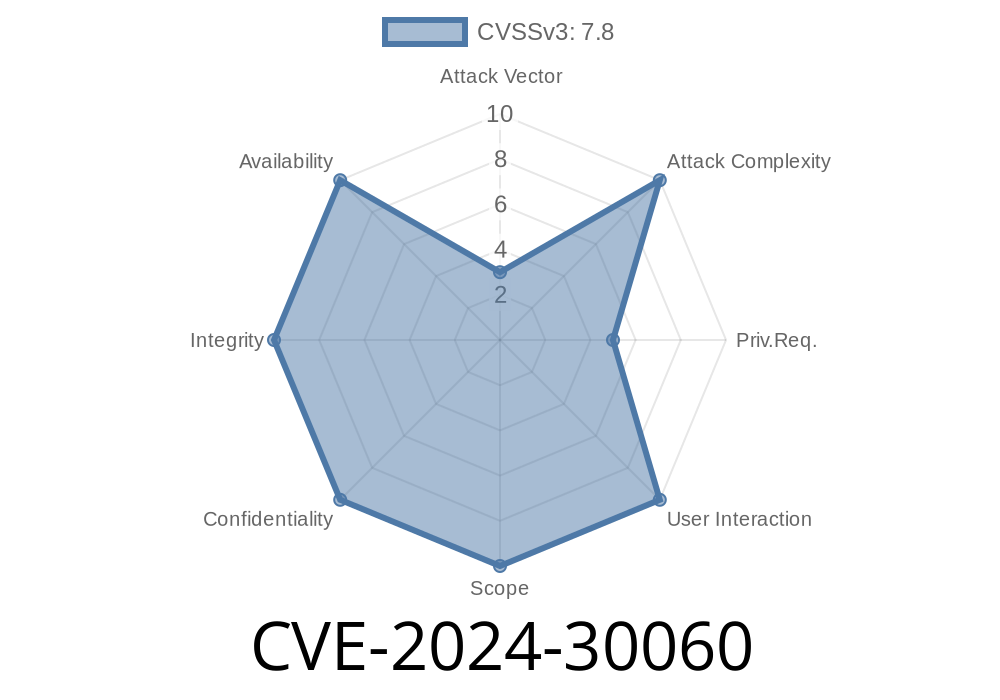The world of cloud computing is constantly changing, and security remains a moving target. In June 2024, Microsoft patched an important issue inside Azure Monitor Agent (AMA) with the identifier CVE-2024-30060. This vulnerability allows attackers with limited access to a system to elevate their privileges and take control—potentially compromising sensitive environments.
This exclusive deep dive covers how the vulnerability works, shows a simple exploit example, and offers references for further reading.
What is Azure Monitor Agent?
Azure Monitor Agent collects telemetry (logs and metrics) from virtual machines and forwards them to Azure Monitor. It’s widely used to provide visibility and monitoring for both Windows and Linux servers running in the cloud or on-premises.
The Vulnerability at a Glance
CVE-2024-30060 is an Elevation of Privilege (EoP) vulnerability within the Azure Monitor Agent. This means an attacker who already has some access (such as a low-privileged user) could use this bug to escalate their permissions — for example, to SYSTEM on Windows or root on Linux.
### Microsoft’s Summary (from their official advisory):
> An elevation of privilege vulnerability exists in the Azure Monitor Agent that could allow an attacker to gain administrative privileges.
Severity: Important
CVSS Score: 7.8 (High)
Affected Versions: Multiple versions for Windows and Linux
How Attackers Abuse It
The issue arises due to weak permissions on certain files, processes, or communication mechanisms used by Azure Monitor Agent. In some versions, the agent executes actions or handles configuration updates with excessive privileges and inadequate validation of the caller’s rights.
A local attacker can use tools or crafted code to interact with these agent components, tricking them into performing privileged operations on their behalf.
Realistic Exploit Example (Windows)
Note: Exploiting this vulnerability requires local access to the machine where Azure Monitor Agent is installed.
Step 1: Find Insecure File or IPC Channel
Attackers look for misconfigured files or named pipes. For example, let’s say C:\ProgramData\AzureMonitorAgent\data\config.json is writable by non-admin users.
Step 2: Overwrite or Hijack the File
# Malicious user overwrites the config file to trigger an unwanted behavior
Set-Content -Path "C:\ProgramData\AzureMonitorAgent\data\config.json" -Value '{"command": "net user attacker Passwrd! /add"}'
Step 3: Trigger Agent Reload
If the agent periodically reloads this config as SYSTEM, the command may be executed with SYSTEM privileges.
# The agent processes the file, running the attacker's command as SYSTEM
Step 4: Profit
The attacker now has a new user with administrative privileges.
Suppose the agent listens on a UNIX socket at /var/run/ama.sock with world-writable permissions
echo '{"action":"run","command":"sudo adduser attacker"}' | socat - UNIX-CONNECT:/var/run/ama.sock
If not properly validated, the agent could execute this as root.
Mitigation Steps
- Update Azure Monitor Agent: Apply the latest updates immediately! (Microsoft Download Center)
Check File and Directory Permissions: Restrict access to agent configuration directories.
- Monitor for Unexpected Local Changes: Use tools like Sysmon or auditd to watch for changes to agent files.
Further Reading & Resources
- Microsoft CVE-2024-30060 Advisory
- Azure Monitor Agent Documentation
- Security Guidance for Microsoft Defender and Azure Monitor Agent
Conclusion
CVE-2024-30060 is a strong reminder that even foundation-level security can have cracks if basic file permissions or process boundaries are weak—especially for powerful agent software in critical environments. Always keep your agents updated and regularly audit for unwanted privilege escalation paths!
Stay tuned for more in-depth vulnerability breakdowns! If you have questions or want even more details, feel free to ask.
Timeline
Published on: 05/16/2024 23:15:49 UTC
Last modified on: 06/19/2024 20:58:36 UTC
